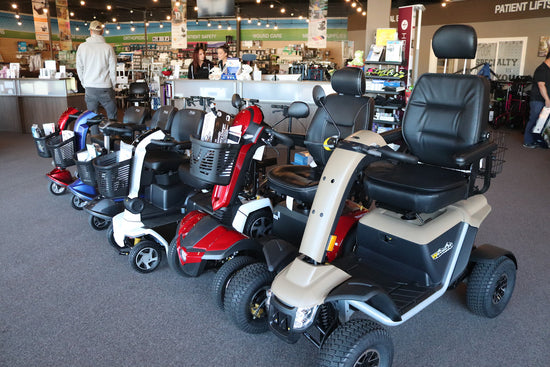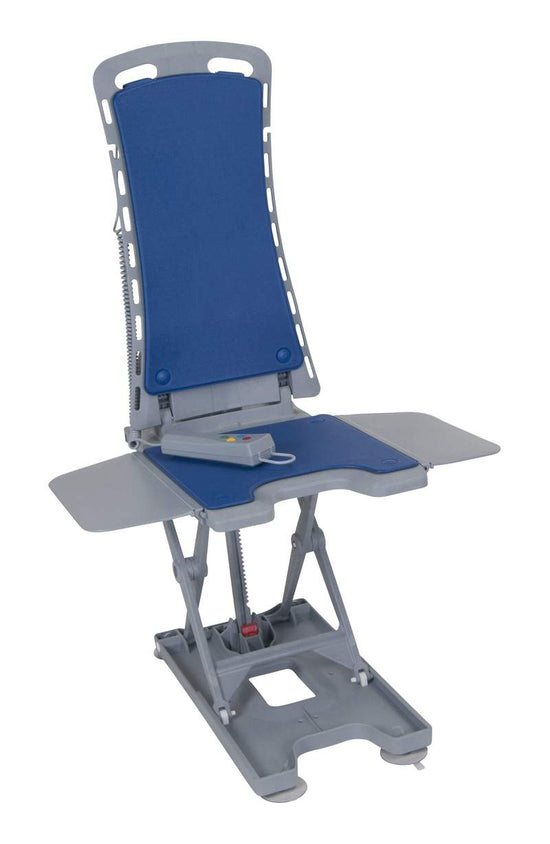Mobility, the ability to move freely and easily, is something that many of us take for granted. However, for those struggling with injuries, age-related health conditions, or disabilities, navigating through daily life can be a daunting task.
In such circumstances, mobility aids such as canes and crutches come to the rescue. Often overlooked, these tools offer a host of benefits that extend beyond mere physical support. They can significantly enhance the quality of life, instill a sense of independence, and boost confidence among users.
As a leading provider of home medical equipment and supplies at Everything Medical, we aim to shed light on the underrated advantages of these essential aids and hope to change the perception surrounding their use.
Understanding Mobility Aids: Canes and Crutches
Mobility aids, including canes and crutches, are instrumental tools designed to assist individuals who have difficulty moving around independently. These aids serve to augment stability, alleviate discomfort, and increase freedom of movement.
Canes are typically used for minor support and are often chosen by those who have a slight imbalance or weakness. They come in various designs, from single-point canes to quad canes, with each variant catering to specific needs.
On the other hand, crutches are generally used by individuals who need to offload a significant amount of weight from one leg. They redistribute weight from the legs to the upper body and come in two styles: underarm (axillary) crutches and forearm (lofstrand) crutches.
Understanding the functionality and differences between these mobility aids is the first step towards acknowledging their potential benefits and integrating them into everyday life for improved mobility and comfort.
The Physical Advantages of Using Canes and Crutches
The use of canes and crutches offers a myriad of physical advantages. First and foremost, they provide essential support and balance, particularly for individuals recovering from injuries or surgeries, or those dealing with chronic conditions that affect mobility. By redistributing weight away from lower limbs, these aids can help alleviate pain and discomfort.

Canes, especially quad canes, offer a stable four-point base that helps users maintain their balance even on uneven surfaces. They can also be used to gauge the depth of puddles or steps, providing an extra layer of safety.
Crutches, on the other hand, are crucial for those who need to offload significant weight from one or both legs. They transfer the load to the upper body, enabling users to move around without putting strain on their injured or weak legs.
In essence, canes and crutches serve as vital tools for enhancing physical capacity, promoting healing, and preventing further injury.
Psychological Impact of Mobility Aids
Beyond the evident physical benefits, mobility aids such as canes and crutches can also have a profound psychological impact on users. Here are several ways in which these tools can influence mental well-being:
- Reduced Fear and Anxiety: The fear of falling or re-injuring oneself can be crippling, limiting one's desire to move around. Mobility aids provide a sense of security and stability, helping to alleviate these fears. Knowing that they have support can significantly reduce anxiety levels associated with mobility.
- Increased Independence: Canes and crutches allow individuals to move around more independently, reducing their reliance on others. This independence can boost self-esteem and promote a more positive self-image.
- Improved Social Interaction: By facilitating movement, mobility aids enable users to participate in social activities more readily. Engaging in community events, visiting friends, or simply going for a walk in the park becomes achievable, which can have a substantial positive effect on mood and overall mental health.
- Enhanced Quality of Life: Overall, the use of mobility aids can significantly improve quality of life. They provide users with the freedom to engage in activities they enjoy, fostering feelings of contentment and happiness.
However, it's important to acknowledge that the transition to using a mobility aid can also bring about feelings of frustration or sadness. It's essential to offer support during this period, emphasizing the benefits and increased opportunities that these tools provide. Over time, most users find that the advantages far outweigh the initial emotional adjustment.
Choosing the Right Mobility Aid
Choosing the right mobility aid is a crucial decision that can significantly impact an individual's quality of life. The right tool will not only improve mobility but also promote healing, alleviate discomfort, and enhance independence.
When choosing between a cane or crutches, factors such as the degree of support needed, the specific condition or injury, and the user's physical strength should be considered. Canes are typically suitable for those needing minor support, while crutches are more appropriate for individuals requiring significant weight offloading from one or both legs.
It's also important to consider the user's lifestyle and daily activities. For instance, if you frequently traverse uneven terrain, a quad cane may be the best choice. Conversely, if you need to navigate stairs regularly, crutches might be more suitable due to their greater flexibility.
Once you've determined the type of mobility aid, it's essential to ensure that it's the correct size and fit for optimal comfort and functionality.
At Everything Medical, we understand the importance of finding the right mobility aid. We offer a wide range of canes and crutches, each designed to cater to varying needs and preferences. Our team is always ready to assist you in making an informed decision, ensuring that your chosen aid will provide the best possible support and enhancement to your daily mobility.
Proper Usage and Maintenance of Canes and Crutches
Proper usage and maintenance of canes and crutches are essential for ensuring their effectiveness and longevity. Here are some guidelines on how to use and care for these mobility aids:
Usage:
- Correct Positioning: The top of a cane or crutch should reach your wrist when your arm is relaxed at your side. When holding the grip, your elbow should bend at a comfortable angle, about 15 degrees.
- Weight Distribution: When using a cane, it should be held on the stronger side of the body. However, it should move together with the opposite leg. For crutches, weight should be borne by the hands, not the underarms.
- Walking: Move the cane or crutches one step ahead, then move the weaker leg forward towards the aid, followed by the stronger leg.
Maintenance:
- Regular Inspection: Regularly check your mobility aid for wear and tear. Pay special attention to the rubber tips as they wear out faster and can cause slips if not replaced promptly.
- Cleaning: Clean the grip and the underarm pads of crutches regularly to remove dirt and sweat build-up. A damp cloth with mild soap will usually suffice.
- Professional Check-ups: Have your mobility aid professionally checked once a year or as advised by your healthcare provider. This ensures that any structural issues are identified and addressed promptly.
Remember, a well-maintained mobility aid not only lasts longer but also provides optimal support and stability, thereby enhancing safety and confidence in mobility.
Overcoming Stigma Around Using Mobility Aids
Despite the substantial benefits of mobility aids, some individuals may hesitate to use them due to perceived stigma. However, it's crucial to remember that using a mobility aid is a sign of taking proactive steps towards improved health and independence. Here are some strategies to overcome such stigma:
- Education: Educate yourself and others around you about the purpose and benefits of mobility aids. Understanding their role in promoting independence and enhancing quality of life can help shift perceptions.
- Positive Self-talk: Remind yourself that using a cane or crutches is not a sign of weakness but a tool for strength and resilience. Your ability to adapt to changing circumstances showcases your determination and courage.
- Seek Support: Join support groups or online communities with individuals who also use mobility aids. Sharing experiences and coping strategies can be very empowering.
- Personalize Your Aid: Customizing your mobility aid to reflect your personal style can make it feel less like a medical device and more like a part of your identity.
Remember, the primary purpose of a mobility aid is to enhance your life. The opinions of others should never hinder your journey towards improved mobility and a better quality of life.




